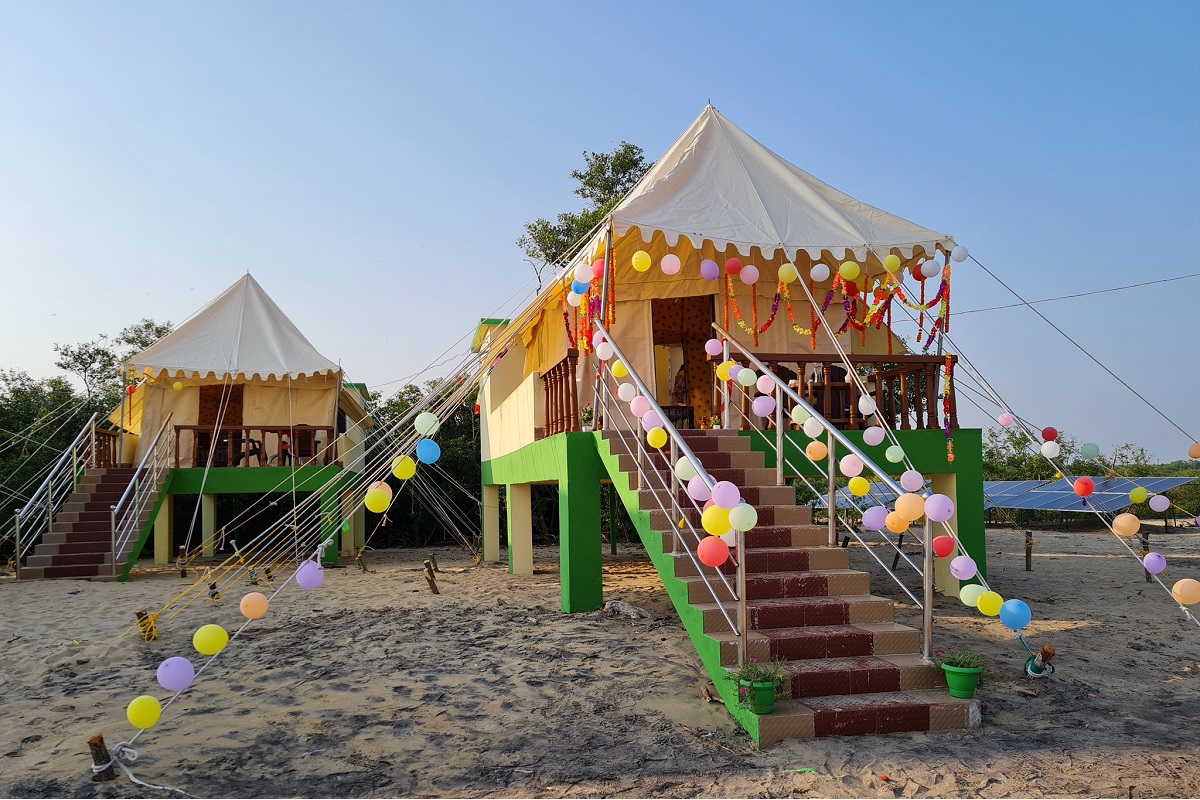Slender increase in winged guests in Odisha’s Bhitarkanika national park
The number of visiting avian winter species has risen to 1,51,614 this year from the 1,51,421 birds counted last year.
Habelikhati Island is an uninhabited territory nestled along the Bay of Bengal. It’s nature’s paradise with forest cover and virgin sea encircling the Island. With the new facility, the Island would become a favoured eco-tourism both for the domestic and international tourists, said forest officials.
SNS | Bhubaneshwar | November 10, 2021 1:23 pm

For nature lovers, here’s some good news. The idyllic Habelikhati Island with its virgin beach in Bhitarkanika national park is now ready to play host to tourists with abundance of natural ambience.
Well furnished cottages have come up close to the serene sea beach and have now been thrown open for visitors from 1 November.
Advertisement
Habelikhati Island is an uninhabited territory nestled along the Bay of Bengal. It’s nature’s paradise with forest cover and virgin sea encircling the Island. With the new facility, the Island would become a favoured eco-tourism both for domestic and international tourists, said forest officials.
Advertisement
Three guest houses built at a hand-shaking distance from the sea will be a major attraction for tourists, who long to savour the warmth of nature, free from madding crowds and human activity.
A half-an-hour boat ride from the national park would take one to the unmanned and scenic Island. Our emphasis is on ensuring safe and comfortable sojourn of visitors who throng here in large numbers to savour the warmth of the ecosystem and unique environs of its wetlands, they said.
The gorgeous beach at the Island has emerged as a nesting ground of endangered Olive Ridley sea turtles. One could come across the breathtaking sight of turtles invading the beach en masse to lay eggs by digging pits by their flippers. The turtles could be sighted at the place during February-March when turtles turn up for their annual sojourn. Besides, the Island is an ideal spot sighting for the Gangetic dolphin species.
The green cover bordering the Island is also home to wild boar, jungle cat, fishing cat, hyena, sambar, striped palm squirrel and water monitors.
Bhitarakanika national park is one of the richest storehouses of mangrove genes. Researchers have come across 11 of the 70 mangrove species, which were at elevated threat of extinction in the world, in Bhitarkanika.
Advertisement
The number of visiting avian winter species has risen to 1,51,614 this year from the 1,51,421 birds counted last year.
The cyclonic storm Dana, which is anticipated to make landfall close to Bhitarkanika and Dhamara in the neighbouring state of Odisha is expected to bring squally winds to Kolkata with speed reaching 60-70 Kmph, gusting to 80 kmph as it crosses Odisha and West Bengal coasts.
The official statistics of the bird census pegged their population at 1,30,123 belonging to ten species.
Advertisement
